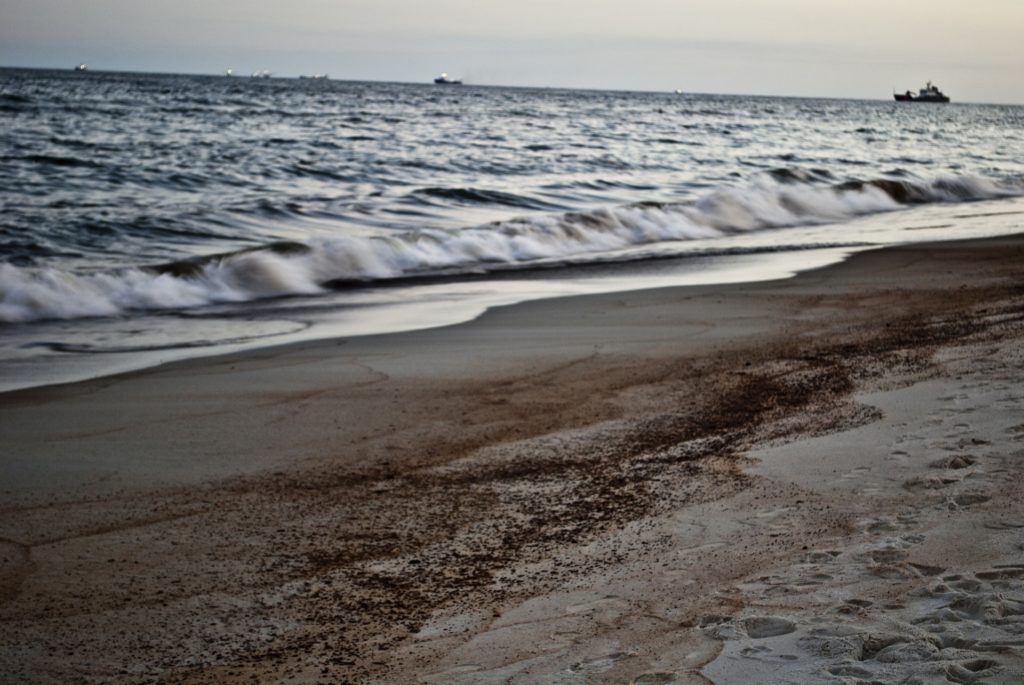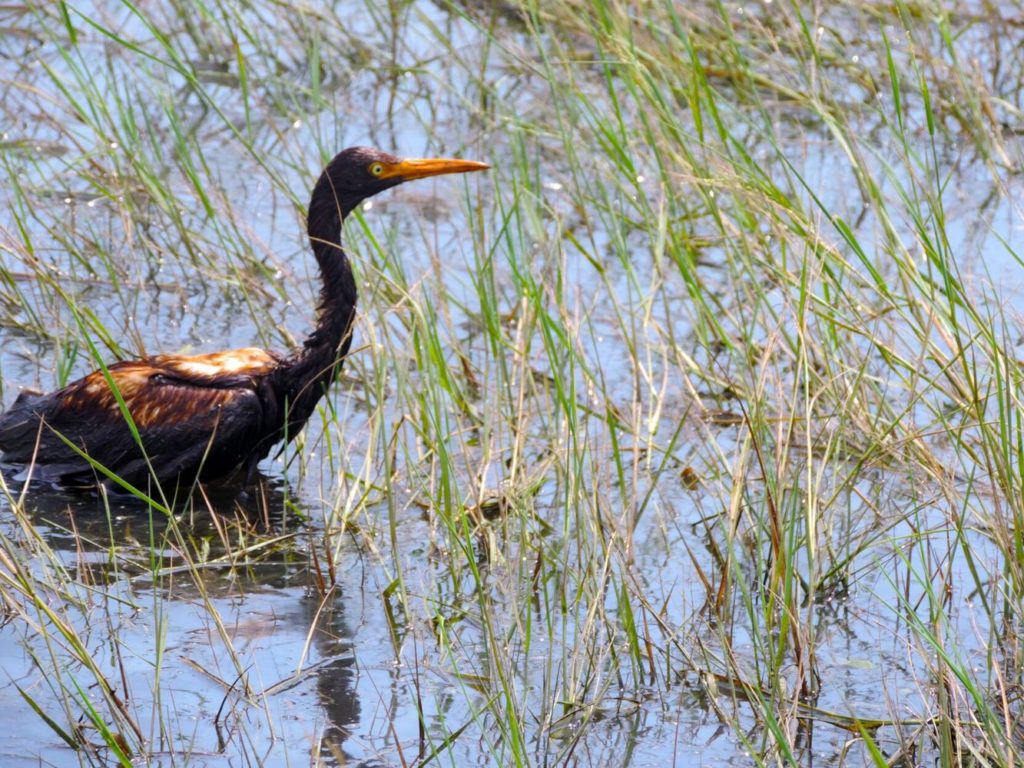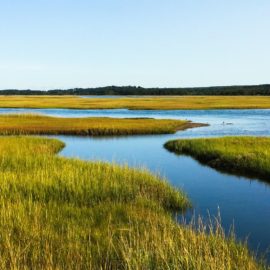
Those looking for oil spills are find them easily. Many are not big ones there are some that fit that discription.
The seaplane barely lifted off the water before Naomi Yoder spotted the first oil spill. Just south of Belle Chasse, Yoder, a scientist with environmental group Healthy Gulf, pointed to the rainbow sheen covering the floodwaters that Hurricane Ida threw across the 2,400-acre Phillips 66 Alliance Refinery complex. Farther south near the mouth of the Mississippi River, Yoder found shrimp boats chugging past a sheen more than nine miles long. South of Port Fourchon, where Ida made landfall on Aug. 29, was a cluster of rusted and storm-ravaged platforms oozing long, thin trails of oil. On the return trip, the plane flew over at least four patches of oil in the fragile marshes rimming Barataria Bay. “It’s mind-boggling,” Yoder said Friday after Healthy Gulf’s fourth flight to monitor the spills left in Ida’s wake. “It’s definitely a surprise to see what’s out there. It’s always more than you expect to find.”
nola.com
It is not surprising that they find more than expected, especially after a Stage 4 storm. The good part is that they are out looking.
More than expected, but how much? Two weeks after the Category 4 hurricane struck the Louisiana coast, it remains a daunting task to determine the number of spills and the volume of oil and other chemicals that ended up in the water. More than 2,300 spills have been reported to the Coast Guard, and about 900 have yet to be investigated. The spills that have been checked range from small fuel leaks off boats to the miles-long sheens from oil platforms. If there’s any good news in the preliminary tallies, it is that the volume confirmed to have been spilled so far is significantly less than the 10.8 million barrels released during hurricanes Katrina and Rita in 2005. Still, the accumulation of spilled oil from repeated hurricanes since then has scientists worried. “A lot of the pictures I’ve seen [of Ida spills] are in coastal areas where there’s a lot of old infrastructure,” said Don Boesch, a professor of marine sciences at the University of Maryland. “That indicates a background question of longer-term contamination. Companies are leaving a lot of wells more or less plugged, but they could be releasing oil.” Boesch cited a recent federal audit that found energy regulators are letting oil and gas companies abandon pipelines in the Gulf of Mexico at an increasing rate. “About 90% of the time, the regulators have decided to let [companies] leave pipelines in place,” Boesch said. “So now we’ve got about 18,000 miles of pipeline that are not active and just sitting in the Gulf.” The U.S. Government Accountability Office audit also determined that regulators rarely conduct or require underwater pipeline inspections, leaving about 9,000 miles of active pipelines largely unchecked. “There are a lot of questions about how those pipelines are holding up to storms and coastal erosion,” Boesch said. “We often don’t know where those pipelines are. They were put in at a time when companies didn’t have to report [locations] accurately or have the technology to say precisely where they are.”
90% and 9,000 miles of pipelines. Plus the are not sure where they are? Why do we have these regulators as they are not doing their job. Oh yes, we are an oil state so we cave to oil.
That might be what happened with the pipeline thought to be the source of one of the slicks found off Port Fourchon after Ida. Divers from Talos Energy plugged the leak but determined the pipeline was abandoned by another company. Boesch said Louisiana marshes already have unusually high concentrations of oil due to “the chronic effect” of frequent spills and seeps from aging wells and pipelines. Old oil trapped in marsh mud is often re-released by storm surges.
Needless to say, the environment suffers. Oil and water do not mix and neither does oil and birds. Birds are not the only ones effected as the oil hurts the water and potentially all that lives in it.
A wide variety of animals live in or near the water’s surface, where sheens appear. Young fish and sea turtles likely suffer widespread harm, Boesch said. And oil exposed to sunlight goes through a chemical process that makes it even more toxic, he said. “We’re not finding a big gushing spill, but a thousand small spills can be just as bad or worse than a big spill,” said Yoder, the Healthy Gulf scientist. That’s because multiple spills can be more difficult to find and clean up, and the responsibility is harder to pin down. “All these shrimp boats we saw going out – what are they supposed to do about all that oil? They are all affected by this,” Yoder said. Regulators and the oil and gas industry have done little to adapt to hurricanes, Yoder said, and state and federal responders and groups such as Healthy Gulf can’t find or monitor all the spills: “There’s absolutely no way we can keep up with all of this.” One major onshore spill at the Phillips 66 oil refinery at Alliance, which flooded after Ida broke through a nearby levee, resulted in the release of an unknown amount of oil. It was contained by berms, but numerous birds have mistaken the contaminated floodwater for ponds. They splash down and get their feathers coated with oil. Wildlife agents have spotted at least 100 moderately or heavily oiled birds – most of them black-bellied whistling ducks, but also some egrets and teal – at the refinery. Many more are likely harmed by thin sheens that agents can’t see on their bodies. “Sheens do the same thing as crude oil,” said Laura Carver, oil spill response coordinator for the state Department of Wildlife and Fisheries. “Both disrupt the [feathers’] waterproofing and the birds’ ability to regulate their body temperatures.” Wildlife agents also noticed an oiled otter, feral hog and two deer at the refinery’s relatively high ground. The deer died, as have a number of cows found outside the refinery.

LOUISIANA DEPARTMENT OF WILDLIFE AND FISHERIES PHOTO
The Coast Guard is also involved. In my service in in he Coast Guard I was not in this field but many are.
To identify and monitor cleanup of spills, the Coast Guard is reviewing 2,308 reports made so far to its National Response Center. A significant number turned out to be either minor, already cleaned up or not found. Commander Bonnie Stewart, who oversees the Hurricane Ida marine environmental response, said only 81 reported to date have been deemed significant enough to require more investigation. “They’re the legitimate potential or actual pollution cases that we are responding to,” she said. “They’re targets deemed a threat to a U.S. waterway, which means they could be actively discharging or have the potential to discharge into a waterway. “Actions we could take is to place boom around the source, a boat or barge or wrecked boat or any type of vessel, or even a barrel on a levee, to prevent oil from leaving the area,” Stewart said. Another 450 locations still need to be assessed, she said, “meaning Coast Guard eyes haven’t gotten to those locations to verify if they are an actual threat.” Not included in the Coast Guard numbers, unless someone else had reported them to the federal agency since Ida, are numerous abandoned oil wells that the Louisiana Department of Natural Resources has not yet inspected, spokesman Patrick Courreges said.
Orphan sites are a problem as no one checks them. This is something that should be looked at as they should not be allowed.
“Our folks have mapped it out and we’ve got about 450 sites that are orphan sites,” he said. “We know that nobody but us [is] going to be looking at the orphan sites,” Cojurreges said. “The problem we have right now is the [lack of fuel for employees to reach the sites and return] and access to some of the sites is very limited.” That number of abandoned wells is smaller than the 1,100 that the agency inspected after Hurricanes Laura and Delta in 2020, he said. A number of reports investigated by the Coast Guard and state officials this year involve oil and gas production companies that also reported numerous spills or potential spills following last year’s hurricanes. For instance, Hilcorp Energy Co. reported more than a dozen locations to the National Response Center where spills did or may have occurred after Ida. “The average release across the incidents caused by storm damage is well below one barrel per incident,” the company said. “None of these involved active well control issues.” In 2016, Hilcorp had a spill of 4,200 gallons of crude oil in Barataria Bay. The next year, Coast Guard responded to a leak from an abandoned Hilcorp wellhead. And in 2019, the company entered into a damages settlement with oyster growers involving the covering of their oysters with sediment while dredging a canal to gain access to one of its wells. The Texas Petroleum Investment Co. had nine Ida reports of potential spills or other incidents listed with the National Response Center as of Sept. 6. The company said one of its sites in the Clovelly oil and gas field, just east of Galliano and in the direct path of Ida’s eye, discharged 50 to 60 barrels. “There were no injuries. Mitigation efforts are underway,” the company said.
Some of the mitigation options include burning the oil.
In January, a contractor hired by Texas Petroleum conducted a “controlled burn” of about 50 barrels of crude oil that leaked from a platform about six miles south of Pilottown on the lower Mississippi River. In August 2020, an explosion and fire aboard an oil platform east of Pilottown forced the evacuation of two workers, but company officials said no oil was released. Other companies with multiple spill reports during Ida include Shell Pipeline, including one that released 90 barrels of oil, and Marathon Pipeline LLC, with a release at its St. James Tank Farm. A barrel of crude oil is equal to 42 gallons. “Due to heavy winds, the crude oil blew off the top of the tank onto the ground and surface water,” the company said. The oil, later confirmed to be 90 barrels, was contained in a secondary dike containment area. Phillips 66 Pipeline LLC, a separate subsidiary from the company’s Alliance refinery, reported leaks totaling 3,433 barrels from two pipelines near Paradis and near Bayou Perou.
What have we learned from these spills? Will it help in the future?
The multiple reports of spills this year, on top of similar reports after hurricanes in 2020, have some analysts asking why more isn’t done to harden the pipeline and wellhead equipment. Robert Bea, a professor emeritus of engineering at the University of California at Berkeley, said it might be time to require systemic five-year engineering reviews like those now mandated for dams and federal hurricane levees. A former engineer with both the Army Corps of Engineers and Shell Oil Co. and investigator of the Katrina levee failures in New Orleans, Bea said such requirements already are required for pipelines in Norway, the Netherlands and Great Britain. “They’ve had to learn these lessons in their offshore areas and have very dramatically revolutionized their design, construction, operation and maintenance processes to preserve the integrity of those important systems,” he said. Bea said the corporate decision-making structure in the U.S. often is responsible for the repeat failures of pipelines and other oil production equipment, a lesson he said he learned while working with Shell to improve pipeline safety in the Arctic Circle. “In the Arctic, ice got thick enough to reach down to the sea floor and below, and if you designed a pipeline and laid it down on the surface of the bottom, you were just waiting for nature – ice gouging – to tear up the pipeline,” he said. It was a costly lesson, Bea said, “because turning ice black with escaped oil is not inexpensive.”
Individual companies have applied some of the lessons.
Shell applied that lesson to the complex geology of the Mississippi River delta, where the sea floor could literally be moved with horizontal mudslides in a hurricane. “In several locations we actually had to design the pipelines to fail, something an engineer doesn’t think much about,” Bea said. The idea was a design that kept liquids in the pipeline with backflow valves at rupture points, with a buoy automatically released when a rupture occurred so that it could be spotted at the surface. “There’s a very rich reward that comes to the company, industry and its stockholders: avoided costs,” he said. Another way to reduce releases is to increase enforcement, said J. David Rogers, a professor of geological engineering at Missouri University of Science and Technology. “Texas has much more strict regulations for fracking, so they don’t have fracking problems,” he said. “They have knowledgeable people doing the inspections. You look at the job requirements, and you have to have 10 years of experience in the oil and gas industry. You don’t have dummies around checking on people. They’re very seasoned professionals, and the oil industry has to adjust.” “When you have a spill, you get a penalty,” Rogers said. “If you violate their rules, you pay for it. That’s how you get people to take you seriously.” Louisiana government’s oil spill response coordinator, Samuel Jones, said the industry has made improvements since Katrina, which is one reason why the post-Ida spills don’t seem as bad as after Katrina in 2005. “We visit the site. We contact the owners,” he said. “A lot of the owners have been responsible. They already have contractors that come out and do the repairs, and they sop up the oil or they suck it up with vacuums or whatever.” He said production companies’ focus on risk from storms is significantly better than in the 20th century. “I remember Betsy, and I even remember Audrey in 1957,” Jones said. “There was no oil spill program then. There were no flyovers. There wasn’t anything like that in the ’50s, ’60s, ’70s, ’80s.” “We got into the 2000s when Katrina really broke things open, and it woke everybody up: ‘This is bad. This is serious.’” he said. “The world has changed since then.”
We get many chances to learn and to apply what we learn. Hopefully in the future there will be fewer leaks. But we need to take care of the orphan wells.



